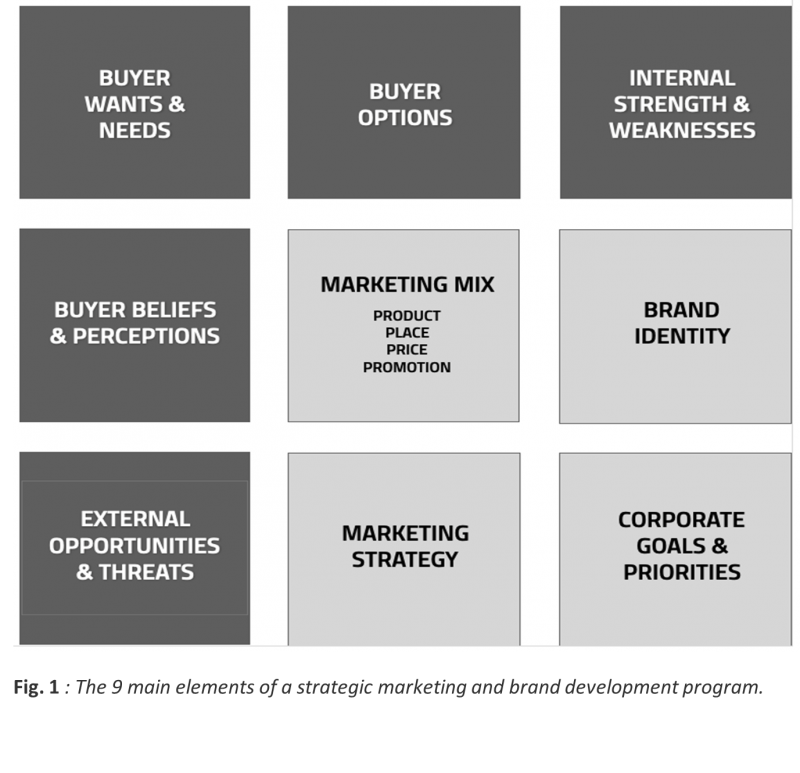When Is the Right Time to Invest in Your Brand?

You have probably heard that your corporate and/or product brands can be the most valuable assets your company owns.
You may even agree.
But when is the right time to start investing in building brand equity as part of a larger strategic marketing initiative? And what is the benefit of such an investment to your organization?
The brand advantage
Whether your organization markets internationally or domestically, to other businesses or to consumers, a strong brand reputation delivers results directly to the bottom line.
That is because it allows your company to charge more and attract more sales than weaker brands. It also creates a halo effect allowing your company to expand its product offer and cross-sell with greater ease and less cost.
When the competition heats up, strong brands find it easier to maintain pricing integrity, making profit less prone to fluctuation. Investors love these companies because strong brands also increase the probability of future sales and thus reduce risk on many fronts.
All this is crystalized when the company is sold, and accountants fix a number on the “goodwill” contributed by the brand. For a strong brand, it is not uncommon for the valuation of the goodwill contributed by the brand to dwarf the value of the company’s tangible assets.
As explained in my book International Brand Strategy, these benefits apply to small companies as well as the Apples and Amazons of the world. But getting a brand to the point where it can deliver this type of value back to the business does not happen on its own. Your brand needs help to do that in the form of strategic planning and management.
For most companies, this comes later in life. Initial brand work for start-ups and sales-driven organizations is almost always focused on the logo and visual profile to ensure consistency in appearance. This is merely a “corporate hygiene” factor that helps the organization look professional but does little to drive growth.
That being the case, when is the right time to switch from treating your brand like a graphical asset to managing it as a key driver of business growth? I will discuss timing in a moment, but first I would like to address the type of work required to properly manage your brand.
What is strategic marketing and brand management?
No doubt, you and your team have a pretty good sense of what your organization’s brand stands for. You may also feel you understand your customers pretty well. So why bother with formalizing a marketing and brand management program?
In short, it will give you, and more importantly the rest of your team, a far better grip on the key variables that will direct the growth of your business, so you can manage them to your advantage and outmaneuver your competitors.
There are nine moving parts to this equation which I summarize in Figure 1. As the items in the darker colored blocks change, the organization adapts the items in the lighter colored boxes in response.

This process is done instinctively by good entrepreneurs, but as the business scales, instincts alone no longer suffice for two reasons:
- As the business develops, more people are required to run it. Since they cannot read the founder’s mind, it is good to understand the basis of the founder’s good instincts and get them down on paper so they can guide the team.
- As the business scales, complexity scales as well. The sheer number of buyer segments, markets, and competitors make reliance on instincts, in the absence of objective data, an increasingly risky proposition.
A strategic marketing and brand management program ensures that the organization is proactive in driving sales, profits, and brand equity, and that it has the information and tools in place to do so with agility. This means understanding, articulating, and monitoring the things in the dark boxes.
This is intended to help leadership see the market more clearly than your competitors. Inside the company, it means codifying, articulating, and adapting the things in the light boxes to better navigate the market and achieve the organization’s goals.
All this gives the leadership team more control over the business. But more importantly, it moves your organization towards its goals faster. In that sense, it provides something even more precious than profits: time. It can get you where you want to go years or even decades sooner.
When is a strategic marketing and brand development program needed?
As an educator and advocate of strategic marketing and brand management, I cannot imagine an organization that would not benefit from incorporating this work into the business from day one — if it has the financial and mental bandwidth to do so.
However, as a practitioner who has worked with many start-ups and mentored many entrepreneurs, I can say that in all but exceptional cases, that bandwidth does not exist.
To dedicate substantial resources to strategic marketing and brand development in the early days means taking resources from product development, production, and delivery, not to mention putting additional strain on cash flow.
For those reasons, I would certainly include strategic marketing and brand development in the foundational planning for the business but would advise a light touch on strategic brand development investment in the early stages if it means "robbing Peter to pay Paul."
As soon as the fundaments of product development, production, distribution, and sales are in place, then I would move quickly to begin a program of ongoing strategic marketing and brand development at the level your organization can afford.
It is not binary. These efforts can be scaled to your business size and needs. But the earlier you start, the less expensive the program will be to get off the ground and the more your organization will benefit from it.
For example…
You can grow sales without a strategic marketing and brand development program in place. We recently worked with a company that, over the span of 20 years, had grown to around $350 million in annual sales globally without giving a thought to strategic marketing or brand identity. Their growth could be attributed to the founder’s sharp business instincts and a dedicated sales force.
But behind the scenes they had issues. Over the previous decade they had hit a ceiling. Sales growth had been slowing and they found it difficult to compete for the next tier of buyers they would need to grow further. To keep sales volume up, they felt forced to offer lower prices, which steadily eroded profit margins.
Working with the CEO and board, we began a strategic marketing and brand development program. What made this challenging was undoing two decades of process, thinking, and bad habits that focused solely on sales at the expense of margin and brand equity.
We reorganized, rebranded, and retrained. Within months sales revenue increased 12% with a 33% increase in gross profit. Moreover, the company’s share price more than doubled. They broke through the ceiling and began growing profitably again.
The exercise was a success all around, but I was haunted by the thought of where the company could have been had they embraced strategic marketing and brand development 18 years earlier when they should have. In this case, opportunity costs regarding unrealized sales revenue most likely breached ten figures.
No excuses
If your business is more than a couple of years old, the time to start thinking about strategic marketing and brand development is now.
When speaking with CEOs, the most common reason they cite for delaying this work is that their company is still evolving, and they feel there are too many changes in play to define the brand and marketing strategy conclusively.
However, the fact that a CEO can see those changes on the horizon is an argument to invest in the brand now — not wait until the company seems more “settled.” A sound brand identity and marketing strategy are built to accommodate these types of changes in the business.
Moreover, one of the primary functions of this work is to guide the company through times of transition and ease the disruption that such changes can create within the organization.
Whether the imminent changes include merging another organization’s brands into your own portfolio, launching new product ranges, or entering new geographic markets — all of these will be facilitated by a strategic marketing and brand development program.
The other reason for waiting is cost. Granted, starting a strategic marketing and brand development program may put a dent in your budget if you did not plan for it. But getting started may not be as expensive as you think.
We have seen many mid-sized organizations start and benefit from these programs by investing as little as 1% of their annual revenue. That is not an inconsequential amount, but when you see the increases in revenue, profit, brand equity, and share value you may wonder what took you so long.




